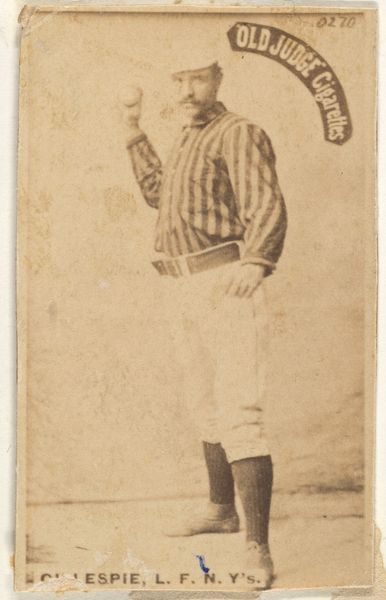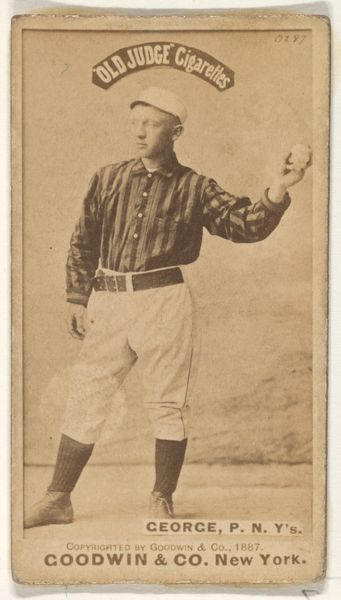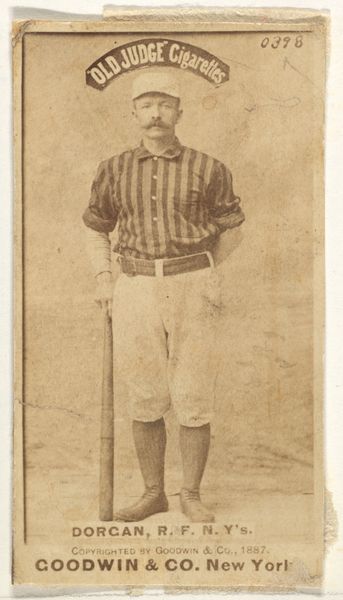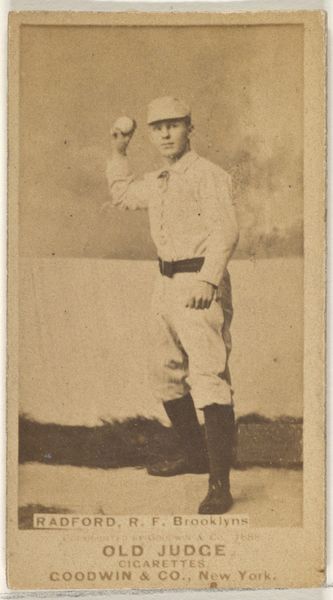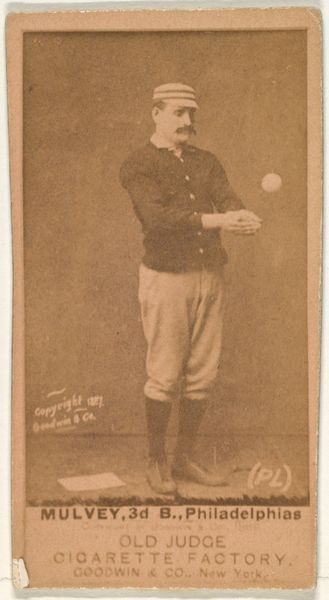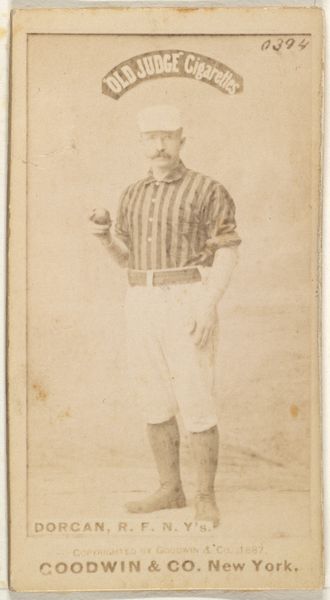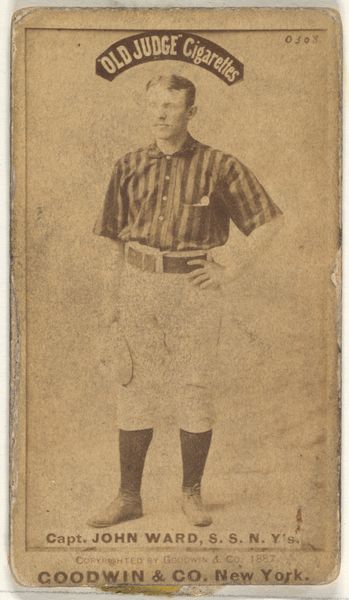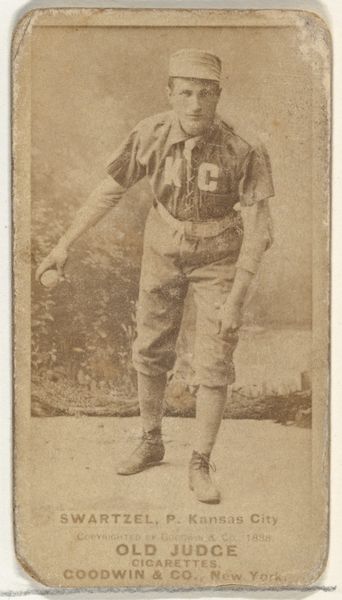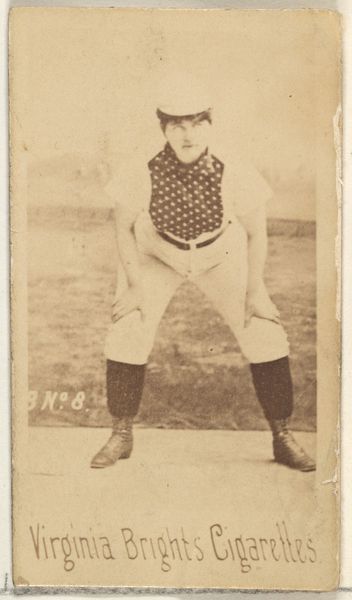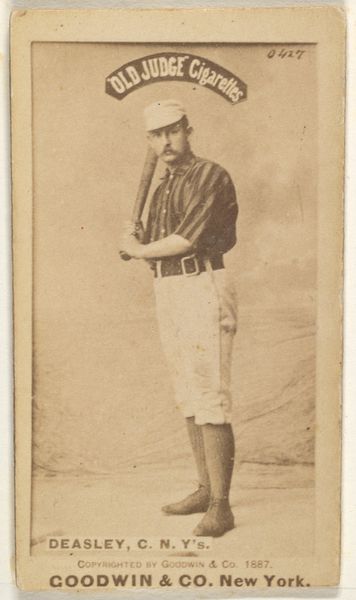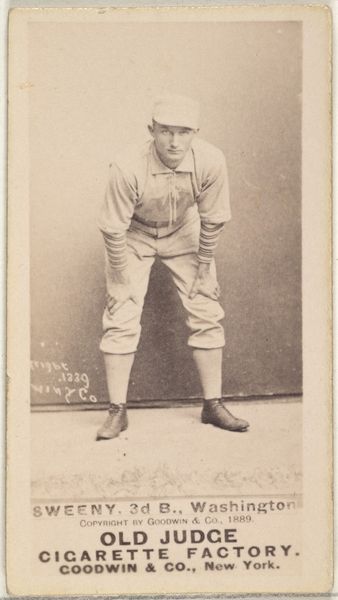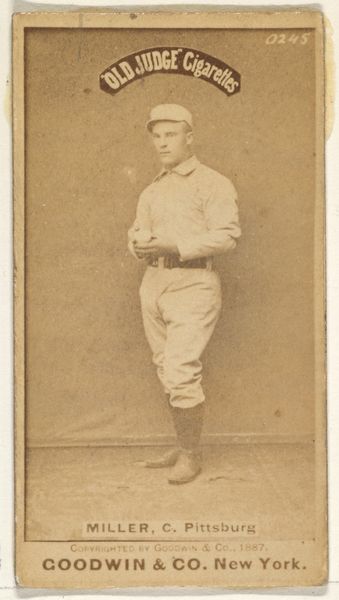
Danny Richardson, 2nd Base, New York, from the Old Judge series (N172) for Old Judge Cigarettes 1888
0:00
0:00
Dimensions: sheet: 2 11/16 x 1 3/8 in. (6.9 x 3.5 cm)
Copyright: Public Domain
Curator: I find something deeply evocative in the sepia tones of this 1888 baseball card, "Danny Richardson, 2nd Base, New York, from the Old Judge series" created by Goodwin & Company. It really places you in the era of early professional baseball. What's your initial response to the image? Editor: I'm struck by the almost devotional quality it has. The player, Richardson, is presented with such seriousness; it reminds me of an Orthodox icon, almost a saint of the baseball field. It invites us to contemplate the mythology building around this sport in its infancy. Curator: Absolutely. Baseball wasn't just a game, it was intertwined with notions of masculinity, national identity, and even immigration at that time. The "Old Judge" series was specifically produced to sell cigarettes. Placing athletes on these cards was about more than marketing; it reflected an aspirational element for working-class communities. These cards were collected, traded, and were part of the fabric of daily life for many Americans. Editor: Right, and notice how carefully the artist captured his uniform, particularly those striped sleeves— the stripes themselves could symbolize aspiration and forward movement within social structure. But also his stance; ready but waiting, a study of potential and kinetic energy, very akin to how religious icons convey an otherworldly strength and control. This wasn’t simply a representation of an athlete; it was about creating an archetype. Curator: I think there's a tension inherent in that. While it seems to ennoble the sport, consider the labor conditions within the tobacco factories, the exploitation of immigrant workers who mass-produced these very cards. The celebration of athletic prowess occurs alongside a stark social inequality. It shows you how social values were intricately entwined with capitalist production, even in what appears to be a simple promotional item. Editor: Precisely, this juxtaposition makes it a very complex cultural artifact. It holds the symbolism of national pride and entertainment alongside signs of much harsher social realities. When viewed as more than just a card, these materials speak of tensions as clearly as they reflect their historical culture. Curator: Seeing through both its simple promotional context and its implications across American life helps reveal unexpected truths within familiar images. Editor: Indeed, It’s about unveiling multiple layers beneath what at first glance seems like a very straightforward piece of memorabilia.
Comments
No comments
Be the first to comment and join the conversation on the ultimate creative platform.
